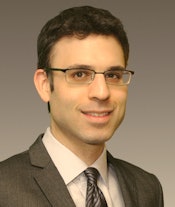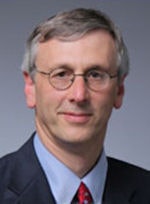
Burnout among radiologists is on the rise, with one of the principal contributing factors being workplace inefficiency. What measures are being taken to address this pressing issue? Researchers from NYU Langone Medical Center offer one solution in a paper published online September 9 in the Journal of the American College of Radiology.
 Dr. Andrew Rosenkrantz from NYU Langone Medical Center.
Dr. Andrew Rosenkrantz from NYU Langone Medical Center.The researchers created a new position in their radiology department -- the reading room coordinator -- specifically intended to mitigate radiologist burnout by assuming many of the tasks handled by radiologists that don't involve image interpretation. There has been a steep increase in use of the service by radiologists, according to lead author Dr. Andrew Rosenkrantz and principal investigator Dr. Michael Recht.
"Reading room coordinators took away some of the radiologists' activities, tasks that are very important but don't need to be done by a radiologist, and allowed them to spend more time on what they were trained to do," said Recht, who is chair of the radiology department at NYU School of Medicine. "It has made their job more pleasant and allowed them to do what they truly enjoy to do on a daily basis."
Radiologist burnout
Radiologists are working harder and harder, and there's a constant pressure for increased productivity. What's more, radiologists are feeling pressure to read studies in different places and consult more often with referring physicians, which only adds to the pressure, Recht told AuntMinnie.com.
After investigating the potential factors triggering radiologist burnout, the researchers identified a single contributing factor: extensive time spent on the phone with coworkers and referring physicians. They hypothesized that creating some sort of advanced practitioner role within the department could assume some of the burden.
 Dr. Michael Recht from NYU Langone.
Dr. Michael Recht from NYU Langone."We felt that we were way behind other clinical departments in using advanced practitioners as part of our workforce, putting too much responsibility on radiologists," Recht said.
To address the issue, the department developed the reading room coordinator service to take over these duties. More than simply connecting radiologists with other hospital staff, reading room coordinators were trained to handle an array of requests, such as faxing reports and triaging phone calls. In effect, they collectively function as a buffer from potential duress and inefficiency (JACR, September 9, 2017).
"There's nothing more disturbing to a radiologist than working and having the phone constantly ring, making you stop and lose your train of thought," Recht said.
The department staffed the service with a mix of new hires and employees transferred from other positions in the department.
"Many of the reading room coordinators transitioned from other roles, and others were brought in and trained," Rosenkrantz said. "They needed to know the system for referrals, know how to find people -- where and when, and have a feel for the department."
What began as a collective of five coordinators offering support during the day quickly expanded into a team of nine providing 24/7 assistance, not only for the academic center, but also for the medical enterprise in its entirety.
How it works
How does the process work? It's based on the department's radiology workflow engine, which resembles an instant messaging platform and allows radiologists to click on a button to request the reading room coordinator service. After accepting the request, the coordinator connects with the radiologist and they communicate further via text or phone.
After the service was established, the researchers decided to analyze how often the coordinators were being used. To no one's surprise, the number of service requests sent to the reading room coordinators had steadily increased since its inception, from 55 requests in October 2015 to 2,821 requests in May 2017.
The researchers further specified the types of requests made by the radiologists:
- The most common reason for a request was to connect with a referring physician, at 79.6%, followed by the need to speak with a technologist (13.9%), requesting 3D reconstructions (1.6%), asking for prior examinations (0.8%), and reporting technical issues (0.3%).
- The most common time for requests occurred outside of routine daytime hours (37%).
- The most common subspecialty of associated examinations was abdominal, at 28%, followed by neuroradiology (24.8%), cardiothoracic (19.2%), offsite community (11.4%), musculoskeletal (9.3%), and pediatrics (4.2%).
- The most popular imaging method requested was CT, at 40%, followed by x-ray (26.3%), MRI (20.5%), and ultrasound (11.7%).
On average, the coordinators picked up requests within two minutes and completed them in less than five minutes.
Although the researchers have yet to determine the extent to which using reading room coordinators improves workplace efficiency and reduces radiologist burnout, the future of the new role looks promising at NYU Langone.
"Of all the changes and innovations we've made over the years, this change has been the most universally praised and appreciated by the radiologists," Recht said.
Thinking further, increasing the work efficiency of radiologists would then enable them to dedicate more time to serving the rest of the community, they offered.
"The truth is, we all went into radiology not to answer phones, not to make phone calls, but rather to practice radiology -- to read images, to protocol, to understand when the right image needs to be done, to see the right patient at the right time," Recht told AuntMinnie.com. "And yet too much of our time was being spent on things that we felt other people could do."



















